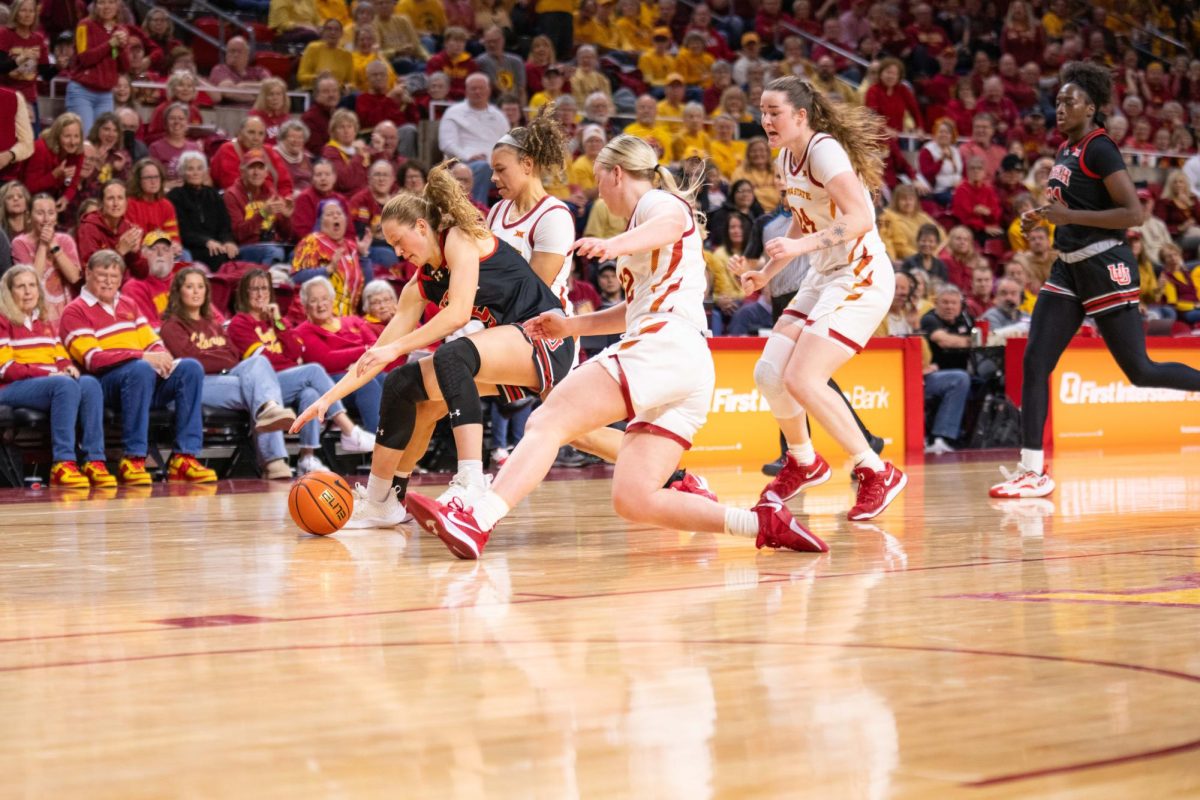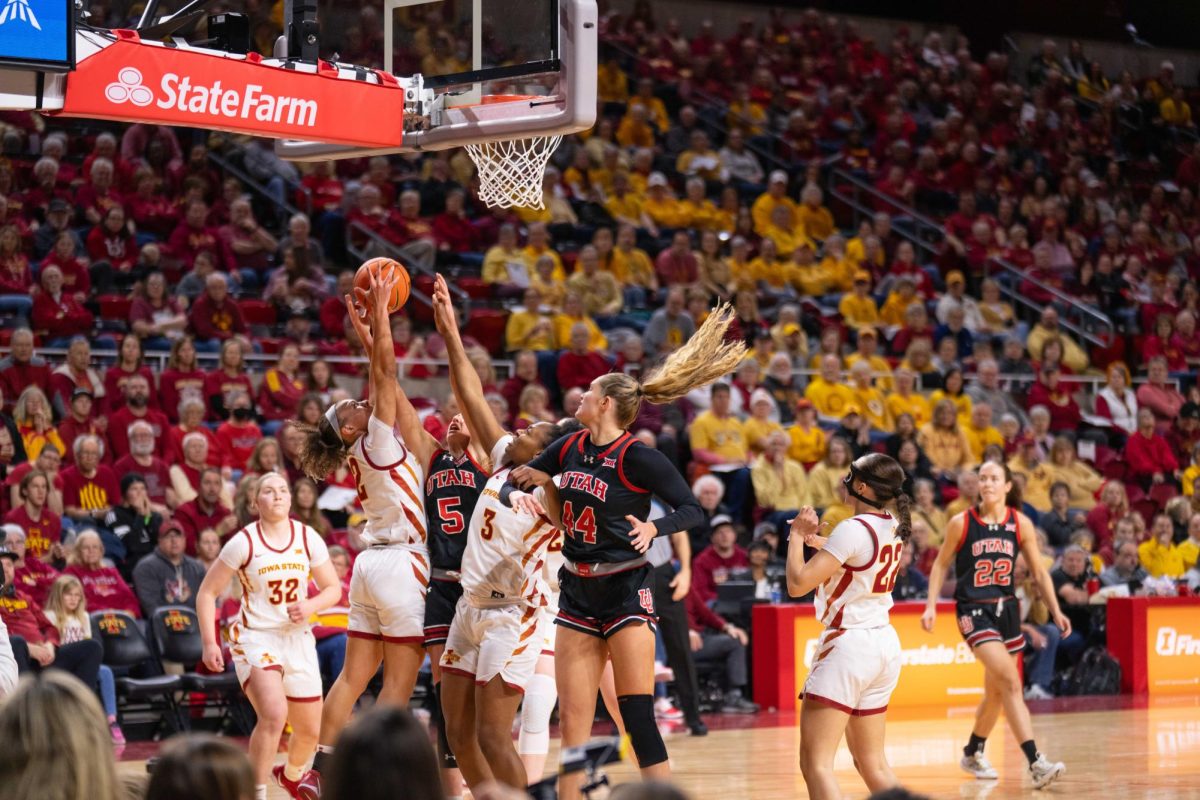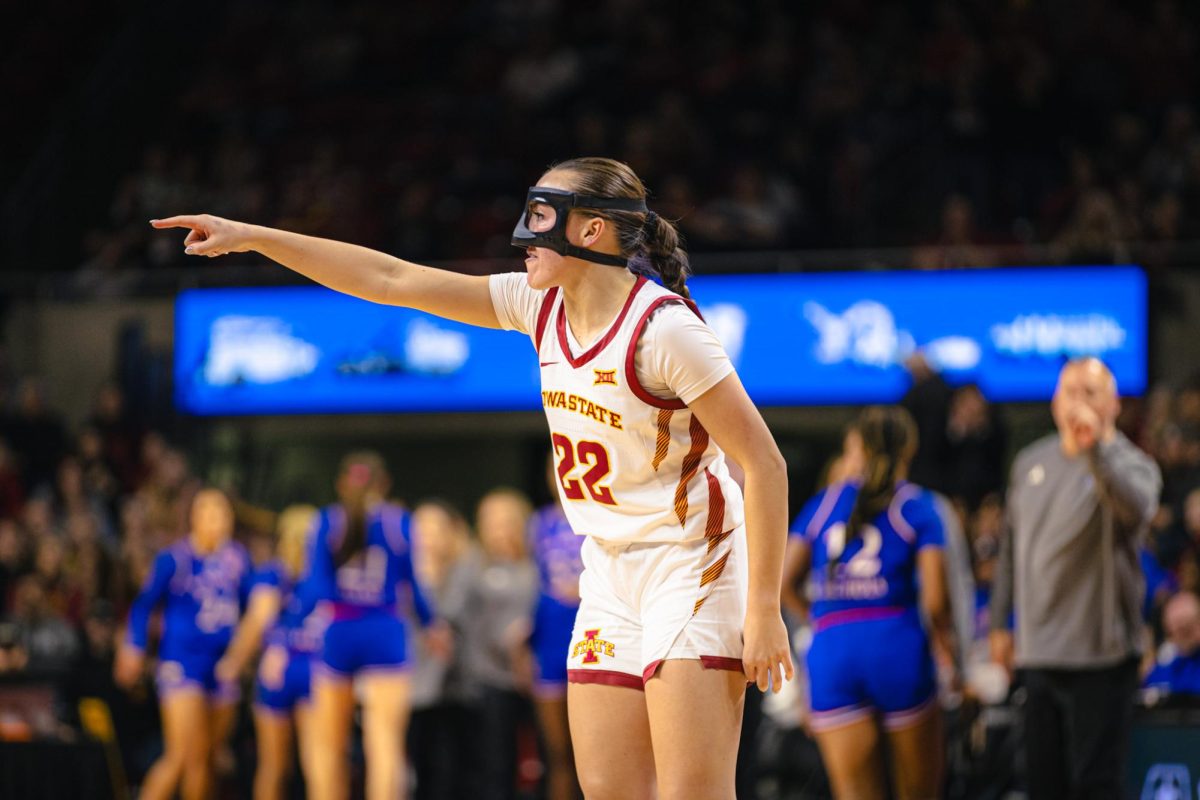On the road to recovery
September 1, 2004
He is the brain of an organization with a $79 million budget and 975 full-time employees.
So the sudden stroke that left a golf-ball sized pool of blood inside Stanley Johnson’s brain should have ended his career, if not his life.
Thursday marks one month and one week since Johnson, vice provost of ISU Extension, suffered the stroke. The 66-year-old veteran administrator’s recovery is so profound that he could lead you to believe nothing happened at all. During the two hours he comes in to work each day, you might see him doing what he did before the stroke — analyzing policies, reading budgets and giving presentations.
The rest of his day is what has changed: Several hours are devoted to rehabilitation. And he takes midday naps now, something he never before had the time or the desire to do.
The stroke happened July 26 while Johnson was shopping for a sports coat and pants during an afternoon break in a Florida conference he was attending. The store manager, Steve Thomas, knew something was wrong when Johnson had trouble standing up after a shoeshine and kept dropping his money when trying to pay.
After Johnson had left the store, Thomas bought a Coke and chased him down, fearing that Johnson was having a diabetic attack. Johnson accepted the drink but insisted that he was fine, even though he was struggling to keep his balance. But Thomas continued to worry and told a police officer what had happened; they found Johnson collapsed in an alcove of a church, a low-traffic area where he might have remained undiscovered for a long time if no one was looking for him.
What had happened to Johnson was far worse than a diabetic attack. He had suffered a hemorrhagic stroke, in which a blood vessel bursts and bleeds into the brain, putting pressure onto the brain tissue, which in turn squeezes the brain’s blood vessels. The body reacts by increasing the blood pressure, which was high to begin with, to prevent the fragile vessels from collapsing. The resulting swelling can choke off the arteries and thus the blood supply to the brain.
This kind of stroke kills half of its victims before they reach the hospital. In all likelihood, had Thomas not decided to chase a stranger down the street, this story would be an obituary.
It’s a fact not lost on Thomas, who as an assistant pastor at his church has used the story as an example of how people are suddenly called to take responsibility.
It was about 4:30 p.m. when Maureen Kilkenny, associate professor of economics and Johnson’s wife of 11 years, saw a message left on her windshield telling her something was wrong. When she got a in touch with a doctor in Florida, he told her that she had better get there within the next eight hours if she wanted to see her husband again. Her mind quickly went to work on the details: how to get to the airport, how to book the flight, who to borrow a cell phone from.
It wasn’t until she got on the plane and sat down that she could think about what had happened to her husband and begin to cry.
“I was hoping for the best,” she said. “But not much else.”
When she arrived at the hospital at 2 a.m., the situation looked grim. Johnson was connected to a variety of monitors and feeds. His right side appeared to be in a slump, or “melted.” One side — she doesn’t remember which — was completely drenched in sweat like he had just left the shower. He was tossing in his bed as if in distress and was barely conscious, but he was conscious enough to squeeze Kilkenny’s hand. She wiped off his sweat with a washcloth and said “I love you” repeatedly.
In this time period, Johnson’s condition was critical. He was just as likely to go into a coma as he was to recover. In the first half-hour of Kilkenny’s visit, though, he did something that would foreshadow his remarkable recovery in the next weeks.
He suddenly sat up and said to friends in the room: “What are you guys doing here? It’s way too late for you … you ought to get back to the hotel.”
Then he receded back into his semi-conscious fitful state. But for that moment, Kilkenny says, he was completely competent and in control.
Johnson would continue to have these spurts of control in the next few days. For 15 minutes, he would be himself but then drift off for hours at a time; it frightened Kilkenny how her husband’s personality could come and go so randomly and abruptly.
She came up with a running joke: Martians were abducting Johnson and leaving behind someone who only looked like him. How long the Martians were in control was how she thought of her husband’s improvement.
“Every now and then they’d give me Stan back,” she said. “But you never knew when it was the Martian stand-in or the real Stan.”
The real Stan won.
In a week, his doctors decided he was well enough to begin rehabilitation in Chicago. Physically, he was progressing well. He could stand, walk unassisted, dress himself — things most stroke victims can’t do until several weeks after their strokes.
But mentally was where he needed the most work. His intellect, memory and vast knowledge needed for his job were still there. But the small things — finding the right word, forming new memories, putting strings of thoughts together — were missing.
He was a star basketball player who knows the intricacies of the game but needs to relearn how to dribble the ball.
Kilkenny was constantly by her husband’s side during the rehabilitation. In Chicago, she immediately immersed herself in literature about strokes and stroke therapy, and she took notes on how the doctors treated Johnson.
This information, which she put into binders and packets, proved its worth. Johnson was released from the rehab institute Aug. 15, having improved quickly and pledging to focus on rehabilitation rather than return to his hectic work life. His friends and colleagues, with the how-to instructions Kilkenny had compiled, eagerly volunteered to assist with Johnson’s recovery.
“None of us are experts, but we care,” said Howard Shapiro, professor of mechanical engineering and former vice provost of undergraduate programs.
“We’re seeing big improvements. He’s a remarkable guy.”
Shapiro has been helping Johnson with processing sequences of steps. For example, Johnson knows how to do long division easily, but is currently unable to keep track of all the operations in his head. So Shapiro had him practice alternative strategies, such as writing the steps down, until his brain can perform the operations as automatically as it did before.
Johnson said he knows he’ll have to change the ways he tackles problems. He’ll get the answer, but in a different way and using different parts of his brain. As someone who could make decisions on the fly, he said he now consults with his colleagues and subordinates more often.
His schedule will have to change, too. If Johnson recovers as well as he hopes to by January, he’ll be an 8-to-5 worker, instead of putting in 12-hour days and working through weekends and holidays. The doctors never pinpointed the cause of the stroke, but Johnson’s strenuous work habits are a probable culprit.
For a man who lives to work, it’s a frustrating adjustment. But he and his wife know it’s a minor setback from a stroke that could have taken away so much more.
“The Martians haven’t been seen since we left Chicago,” Kilkenny says softly.






